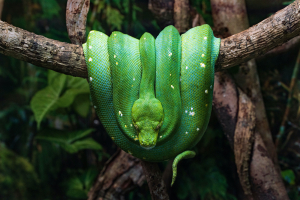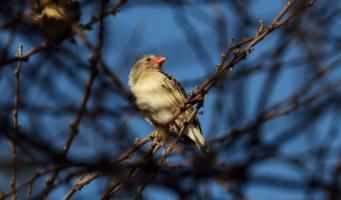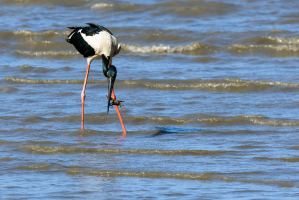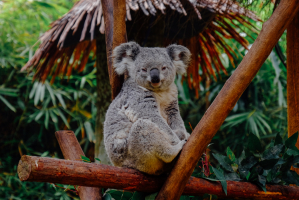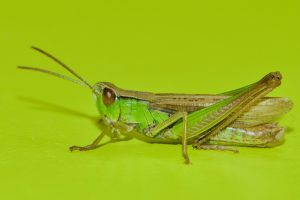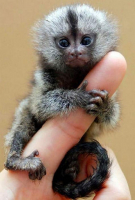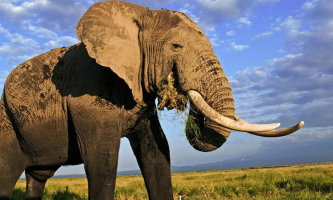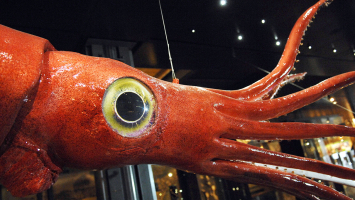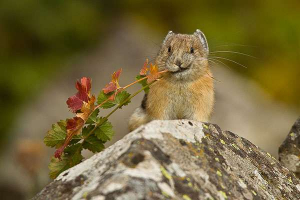Top 15 Common Animals That Start With "H"
The world is home to a diverse array of creatures, each species contributing to the rich tapestry of biodiversity. In exploring the animal kingdom, we ... read more...encounter fascinating and varied organisms, and among them are those that share a common initial letter. In this article, Toplist will delve into the realm of common animals that start with the letter "H."
-
Hawk Moth, scientifically known as Sphingidae, encompasses a fascinating and diverse family of moths characterized by their robust bodies, swift flight, and striking appearances. With over 1,450 species distributed worldwide, these nocturnal insects play a crucial role in ecosystems as pollinators and contributors to biodiversity.
One distinctive feature of Hawk Moths is their impressive adaptability to various environments. Their ability to thrive in diverse habitats, ranging from tropical rainforests to arid deserts, showcases their resilience and versatility. The family Sphingidae comprises species with wingspans ranging from a few centimeters to as much as 10 inches, making them one of the larger moth families.
Hawk Moths derive their common name from their rapid and agile flight patterns, reminiscent of a bird of prey. This exceptional flying ability serves them well during their nocturnal foraging activities. They are often observed hovering over flowers, sipping nectar with their long proboscis – a specialized mouthpart that allows them to access the nectar of deep-throated flowers. In doing so, Hawk Moths inadvertently contribute to the pollination of various plant species, underscoring their ecological significance.
The coloration and patterns on Hawk Moths' wings are another captivating aspect of their biology. While some species exhibit cryptic patterns that help them blend into their surroundings, others boast vibrant hues and intricate designs. This diversity in wing patterns is often linked to the moths' specific habitats and evolutionary adaptations, serving both as a means of camouflage and a display of warning to potential predators.
The life cycle of Hawk Moths is marked by a complete metamorphosis, involving four distinct stages: egg, larva (caterpillar), pupa (chrysalis), and adult. The caterpillars of Hawk Moths are voracious feeders, often displaying a striking appearance with bold colors and intricate patterns. Some species have evolved to resemble the appearance of snakes, a clever defense mechanism to deter potential predators.
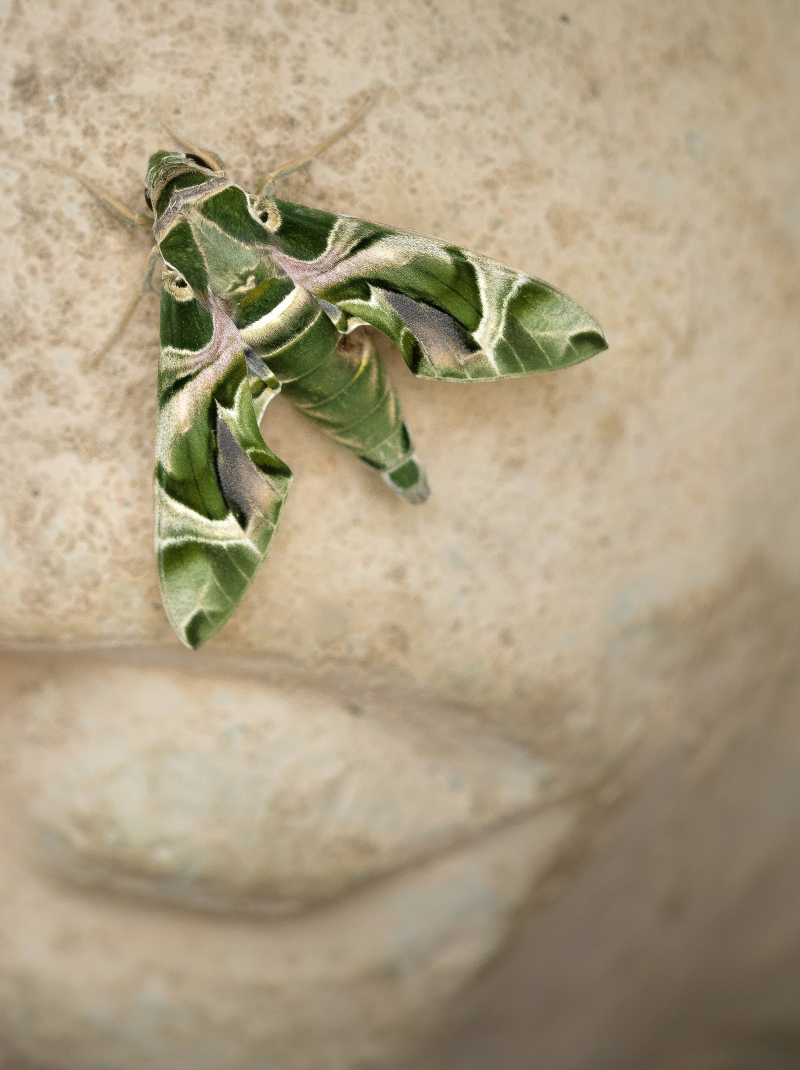
unsplash.com Video by George LeClaire -
The Harp Seal, or Pagophilus groenlandicus, is a captivating and endearing marine mammal that inhabits the frigid waters of the North Atlantic and Arctic Oceans. Recognizable for its striking appearance and unique behavioral traits, the Harp Seal plays a vital role in the marine ecosystem and has become an iconic symbol of the Arctic region.
One of the most distinctive features of the Harp Seal is its pristine white coat marked with dark harp-shaped patterns on the back, giving it a visually striking and recognizable appearance. This distinctive coat is characteristic of pups and is shed as they mature into sub-adults and adults, revealing a silver-gray fur with darker spots. The contrast between the pure white fur and the deep blue sea ice creates a breathtaking sight in their natural habitat.
Harp Seals are well-adapted to life in icy waters, possessing a layer of blubber that provides insulation and buoyancy. Their large, dark eyes offer excellent underwater vision, aiding them in hunting for prey and navigating through the aquatic environment. These seals have a diverse diet, primarily consisting of fish, crustaceans, and other marine invertebrates. Their ability to dive to considerable depths allows them to access a wide range of prey species.
One of the most captivating aspects of the Harp Seal's life cycle is its unique reproductive strategy. Every spring, pregnant females migrate to the pack ice to give birth to their pups, a process known as "whelping." The mothers nurse their pups with high-fat milk, which ensures rapid growth and development in the harsh Arctic conditions. After just a few weeks, the pups molt their white fur and are weaned, embarking on a solitary journey of exploration and learning to hunt.

unsplash.com Video by National Geographic -
The Hippopotamus, scientifically known as Hippopotamus amphibius, is a remarkable and distinctive aquatic mammal that belongs to the order Artiodactyla. Often referred to as the "river horse," hippos are among the common animals that start with the letter "H." Despite their somewhat misleading nickname, hippos share a closer evolutionary relationship with pigs than horses.
These hefty creatures are primarily found in sub-Saharan Africa, inhabiting rivers, lakes, and swamps. With their barrel-shaped bodies, short legs, and massive heads, hippos are well-adapted to an amphibious lifestyle. Their skin, largely hairless, is sensitive to the sun, and to protect themselves, hippos secrete a reddish-brown substance that acts as a natural sunscreen.
The Hippopotamus is renowned for its semi-aquatic nature, spending a considerable amount of time submerged in water to regulate body temperature and avoid sunburn. Despite their formidable appearance, hippos are surprisingly agile in the water, capable of covering large distances and even walking on the riverbed.
One of the most distinctive features of hippos is their enormous mouths, equipped with large canine and incisor teeth. Contrary to their herbivorous diet, these impressive teeth are essential for self-defense, and hippos are known for their aggressive behavior, especially when they feel threatened. Their powerful jaws can crush bones and provide a formidable defense against potential predators, including crocodiles.
Hippos are primarily herbivores, consuming a diet composed mainly of grass. Their grazing habits play a crucial role in shaping the landscape around water bodies, influencing the growth of vegetation, and maintaining ecological balance. Despite their seemingly docile appearance, hippos are responsible for more human fatalities in Africa than many other large animals, as they can be unpredictable and territorial.
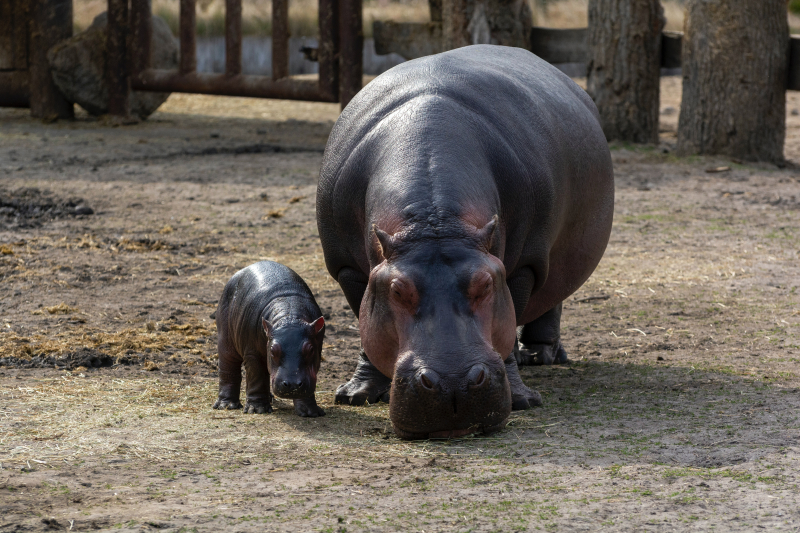
unsplash.com Video by Ze Frank -
The Honey Badger, scientifically known as Mellivora capensis, is a small yet fearless mammal that has earned a reputation as one of the most tenacious and audacious creatures in the animal kingdom. Often described as nature's "bad boy," the Honey Badger is a mustelid, belonging to the same family as weasels and otters, and is primarily found in Africa and parts of the Middle East.
Characterized by a robust build, sharp claws, and a distinctive broad head, the Honey Badger is well-adapted to a wide range of environments, from savannas and grasslands to forests and deserts. Despite its name, honey is not the primary focus of this badger's diet; instead, it has a diverse palate that includes small mammals, birds, insects, reptiles, and even carrion. The Honey Badger's strong jaws and sharp teeth enable it to break open beehives to feast on honey, which adds a sweet touch to its otherwise varied and carnivorous diet.
What truly sets the Honey Badger apart is its renowned fearlessness and aggression. Pound for pound, it is considered one of the most ferocious mammals in the world. Its loose, tough skin, especially around the neck, allows the Honey Badger remarkable flexibility, enabling it to twist and turn to counter attacks from predators. When confronted by a threat, this small mammal does not back down easily. It can confront much larger animals, including lions and hyenas, with a tenacious spirit that has earned it the colloquial name "the fearless honey badger."
The Honey Badger's intelligence is another notable trait. It has been observed using tools, such as sticks and logs, to aid in hunting and gaining access to food. This adaptability and problem-solving ability contribute to its survival in diverse habitats and challenging conditions.
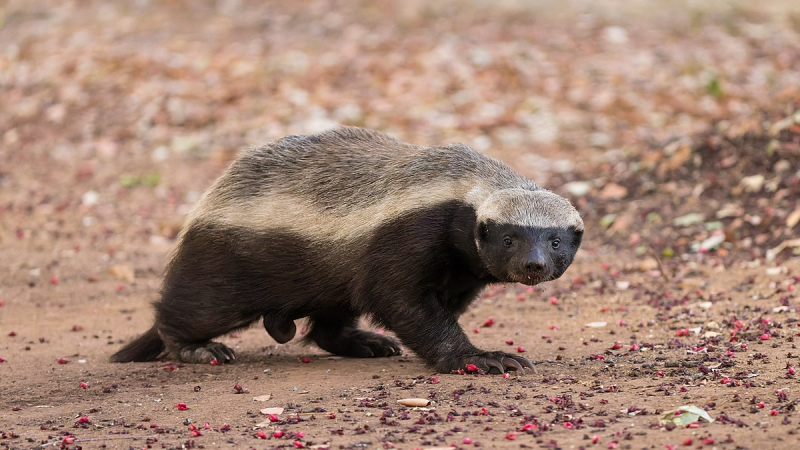
en.wikipedia.org Video by National Geographic UK -
The honeybee, scientifically known as Apis mellifera, is a fascinating and industrious insect that plays a crucial role in the pollination of flowering plants and the production of honey. As a social insect, honeybees are organized into colonies, each comprising three castes: the queen, drones, and worker bees. These colonies are not only essential for the honeybee's survival but also contribute significantly to the health of ecosystems and agriculture.
The life of a honeybee begins in a hive with the queen, the only reproductive female in the colony. She is responsible for laying eggs, and her pheromones regulate the behavior and development of the other bees. The drones, male bees, have the sole purpose of mating with a queen during a flight. Worker bees, the majority of the colony, are females and carry out various tasks to ensure the hive's functionality.
Honeybees are well-known for their remarkable ability to collect nectar from flowers. Using their long proboscis, they extract nectar and store it in a specialized stomach. Enzymes in this stomach begin the process of converting the nectar into honey. Upon returning to the hive, worker bees pass the nectar to other workers who further process and store it in honeycombs. Through a process of fanning and dehydration, excess water is removed, resulting in the creation of honey – a valuable food source for the colony.
While collecting nectar, honeybees inadvertently transfer pollen from one flower to another, facilitating pollination. This crucial role in the reproductive cycle of flowering plants makes honeybees indispensable to ecosystems and agriculture. Numerous crops, including fruits, vegetables, and nuts, rely on pollination by honeybees for successful reproduction.
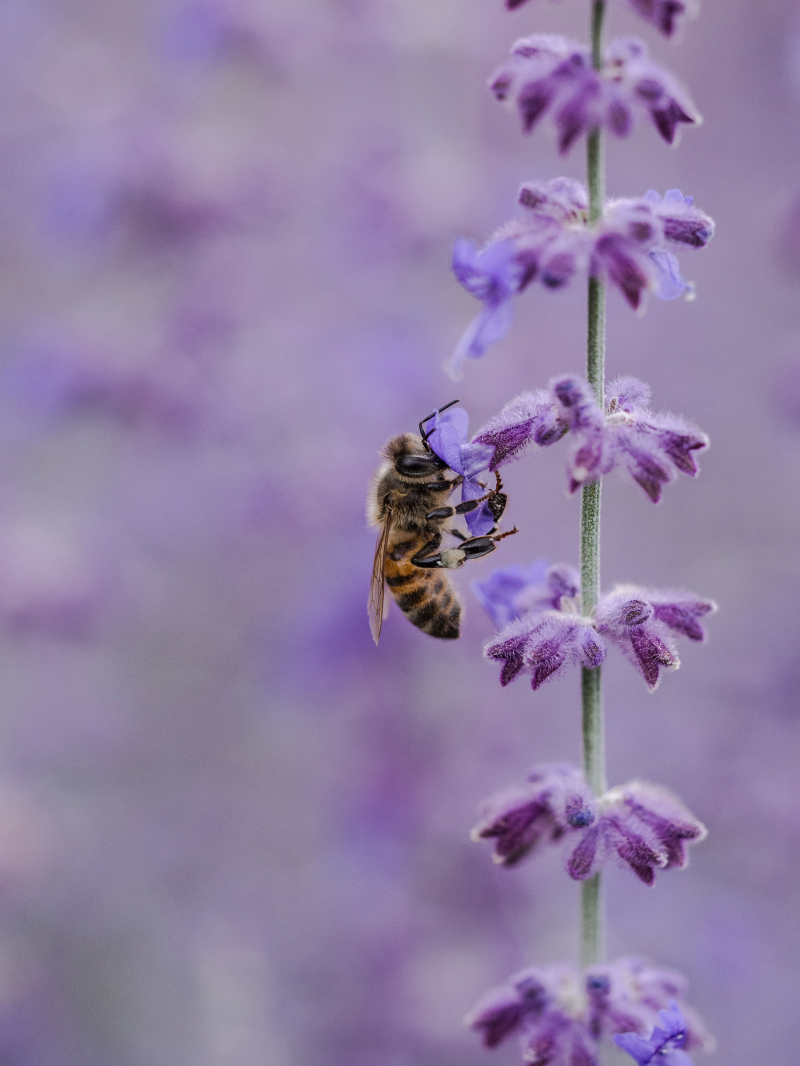
unsplash.com Video by National Geographic -
The Hornbill, belonging to the family Bucerotidae, stands out as a distinctive and charismatic bird that begins with the letter "H." These avian wonders are primarily found in tropical and subtropical regions of Africa, Asia, and Melanesia, showcasing a wide range of species, each with its unique characteristics and habitats.
One of the most striking features of hornbills is their distinctive bills, characterized by a prominent casque, a hollow structure on the upper mandible. This casque varies in size and shape among different species, and while its exact function is not fully understood, it is believed to play a role in communication, thermoregulation, and even assisting in capturing prey. The bill, coupled with their vibrant plumage, makes hornbills visually captivating and easily recognizable.
Hornbills exhibit a fascinating array of behaviors and adaptations. They are predominantly arboreal, spending much of their lives in the treetops of dense forests. Some species are cavity nesters, choosing holes in trees as their nesting sites. Remarkably, during the breeding season, female hornbills seal themselves inside the nest cavity with a plaster made of mud, droppings, and food remains, leaving only a narrow slit through which the male passes food. This behavior is thought to protect the nesting female and her chicks from predators.
One of the iconic species of hornbills is the Great Hornbill (Buceros bicornis), found in the forests of Southeast Asia. Recognized by its large size, striking black and white plumage, and notable casque, the Great Hornbill plays a vital ecological role as a seed disperser. Its diet consists of fruits, insects, and small animals, contributing to the maintenance of forest ecosystems.
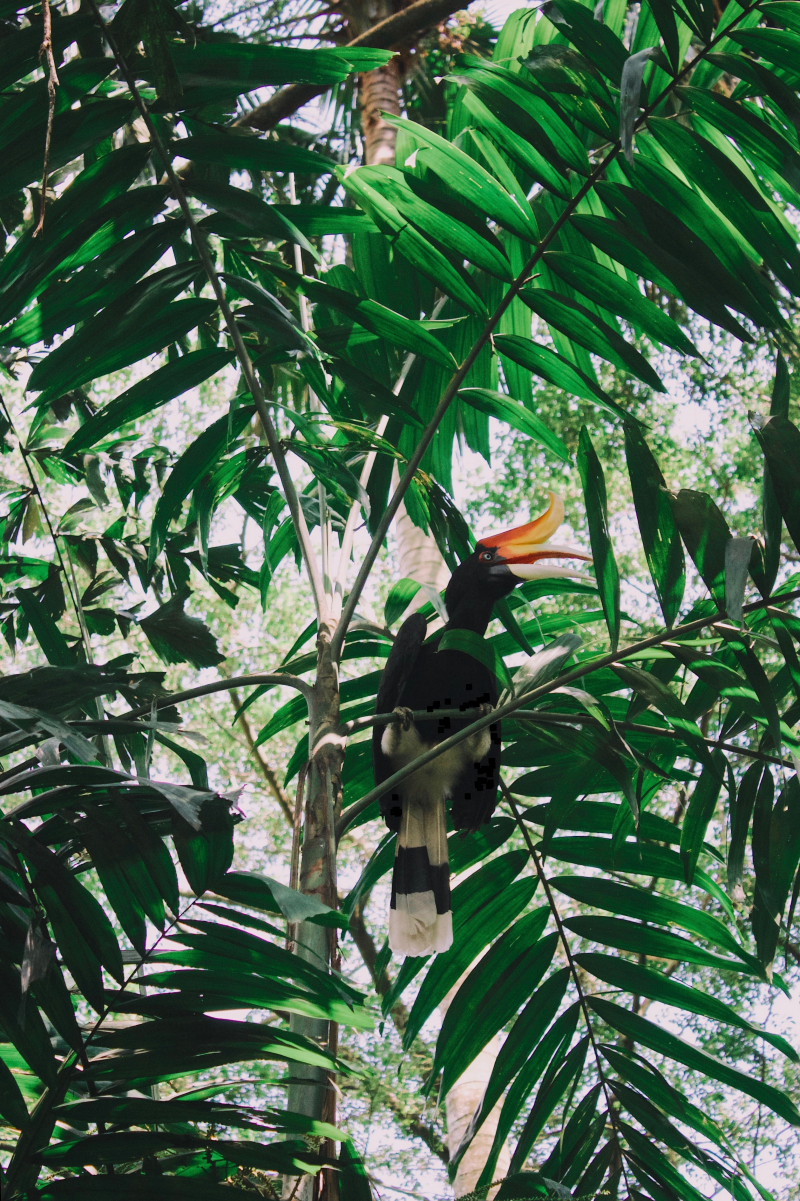
unsplash.com Video by Smithsonian Channel -
The Horn Shark, scientifically known as Heterodontus francisci, is a fascinating and unique species that belongs to the family Heterodontidae. These sharks are commonly found in the eastern Pacific Ocean, from southern California to the Gulf of California, demonstrating a preference for rocky or sandy seabeds along coastal areas. Named for the horn-like projections on their dorsal fins, Horn Sharks are distinctive members of the elasmobranch family, known for their peculiar features and behaviors.
Measuring an average of three to four feet in length, the Horn Shark possesses a stout body with a broad head and a pair of prominent dorsal fins. Its coloration, featuring a mix of brown and gray with scattered dark spots, serves as effective camouflage against the rocky ocean floor. However, the most notable characteristic of the Horn Shark is its dorsal spines – one larger spine in front of each dorsal fin and a smaller spine behind each. These spines contribute to its colloquial name and play a role in deterring potential predators.
Horn Sharks are known for their unique dentition, setting them apart from many other shark species. Their name "Heterodontus" translates to "different teeth," reflecting the fact that they have distinct types of teeth in their jaws. Toward the front, Horn Sharks have sharp, pointed teeth for seizing and holding prey, while the back teeth are flattened for crushing hard-shelled invertebrates like crabs and snails. This dental adaptation reflects their diverse diet, which includes a variety of small fishes, crustaceans, and mollusks.
These nocturnal predators are primarily solitary, spending their days resting on the ocean floor and becoming more active at night when they embark on hunting forays. Their relatively small home ranges contribute to their sedentary lifestyle, with Horn Sharks often returning to the same resting spots.
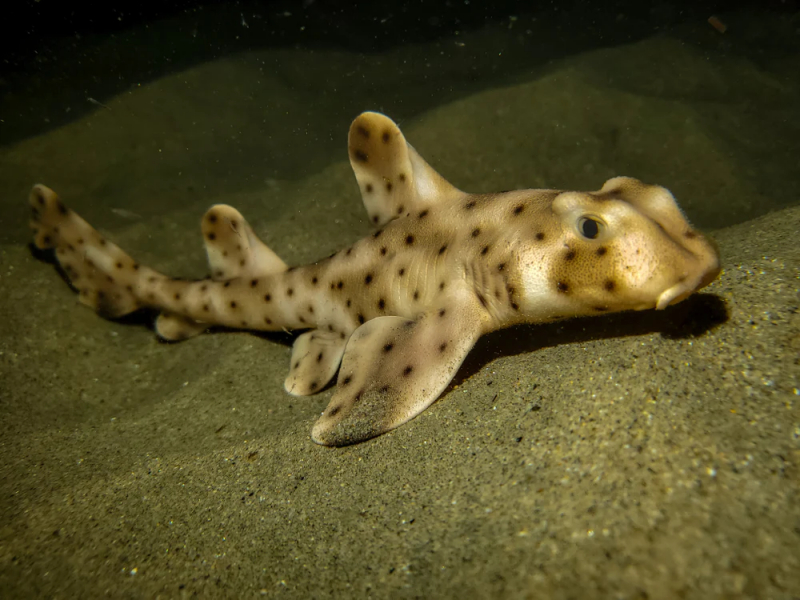
seadwelling.com Video by Monterey Bay Aquarium -
The Humboldt Penguin, scientifically known as Spheniscus humboldti, stands as a charismatic and endearing species within the diverse world of penguins. Named after the Humboldt Current, an ocean current that flows along the western coast of South America, these medium-sized birds are native to the coasts of Chile and Peru. Recognized for their distinctive appearance and behavior, Humboldt Penguins have become a notable symbol of the unique marine ecosystems in which they thrive.
Characterized by a black band running across their chest and down their flanks, Humboldt Penguins boast a contrasting white belly. This distinct black-and-white coloration serves as effective camouflage in the ocean, helping them avoid predators like seals and predatory birds while hunting for their preferred prey - small fish and squid. Their wings are adapted into flippers, aiding in efficient swimming through the water.
Humboldt Penguins are known for their strong, community-oriented behavior, often forming large colonies for breeding and nesting. These colonies are typically established in rocky areas along the shoreline, providing natural protection for their nests. The penguins use guano, their excrement, to create nests that help to keep their eggs elevated above potential flood levels.
During the breeding season, which typically occurs between April and August, Humboldt Penguins exhibit monogamous behavior, with pairs returning to the same breeding site each year. They engage in elaborate courtship rituals, and after successful mating, the female typically lays two eggs. Both parents take turns incubating the eggs, which hatch after about 40 days. Humboldt Penguin chicks are born with a gray downy coat and gradually acquire their adult plumage over the following months.
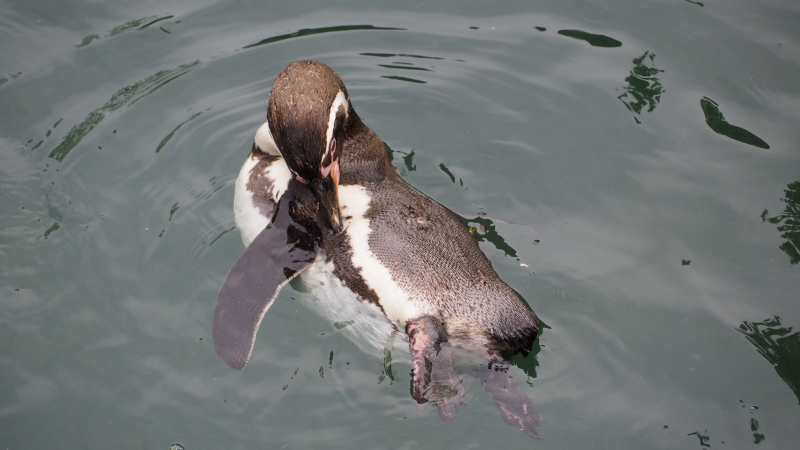
unsplash.com Video by Oregon Zoo -
The Hummingbird, known for its vibrant plumage, incredible agility, and hovering capabilities, is a small marvel of the avian world. With over 300 species belonging to the family Trochilidae, these tiny birds are found exclusively in the Americas, from Alaska to Tierra del Fuego. Their dazzling colors, rapid wing beats, and unique feeding behaviors make hummingbirds a captivating and iconic part of the natural world.
Perhaps the most distinctive feature of hummingbirds is their ability to hover in mid-air. Their incredible agility is facilitated by rapid wing beats, often exceeding 50 beats per second, allowing them to move in any direction – forward, backward, up, or down. This remarkable flying ability is complemented by a unique ball-and-socket joint at the shoulder, enabling a full range of motion for their wings.
Hummingbirds are also renowned for their iridescent plumage, a result of microscopic platelets in their feathers that refract light, creating a dazzling array of colors. These vibrant hues serve multiple purposes, including courtship displays and communication, as well as providing camouflage in the dappled sunlight of their preferred habitats.
One of the most fascinating aspects of hummingbirds' biology is their feeding behavior. With high metabolic rates and rapid wing beats, hummingbirds have a constant need for energy. They primarily feed on nectar from flowers, using their specialized bills and extendable, tube-like tongues to reach deep into blossoms. The nectar provides the necessary fuel for their high-energy lifestyle. In addition to nectar, hummingbirds also consume small insects and spiders for essential proteins and nutrients.
The relationship between hummingbirds and the plants they pollinate is mutually beneficial. As hummingbirds feed on nectar, they inadvertently transfer pollen from one flower to another, facilitating the process of pollination and aiding in the reproduction of flowering plants. Many plants have evolved specific features, such as tubular flowers, to attract hummingbirds as their primary pollinators.
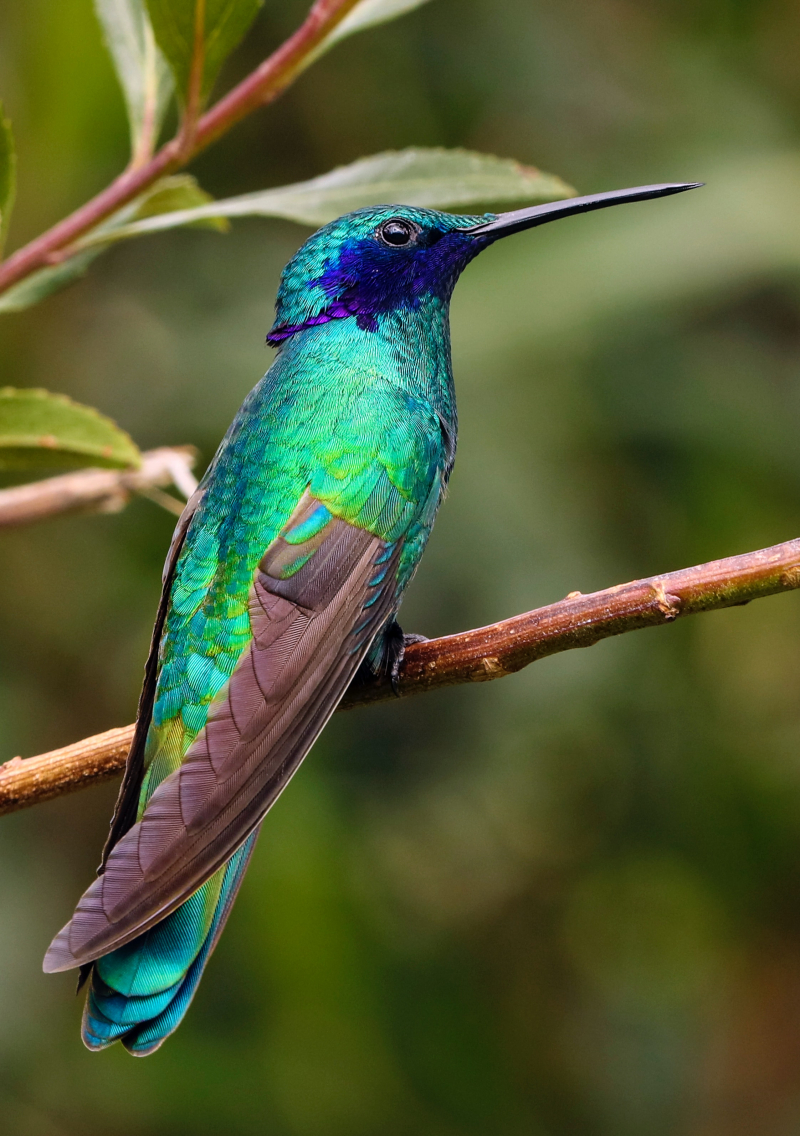
unsplash.com Video by Nat Geo WILD -
The Husky, a breed of domestic dog known for its striking appearance, friendly demeanor, and notable intelligence, has become a popular choice as a companion and working dog. Originating from northeastern Siberia, Russia, the Siberian Husky is a member of the Spitz family and is highly valued for its endurance, strength, and adaptability to cold climates.
One of the most distinctive features of the Husky is its striking appearance, characterized by a thick double coat, erect triangular ears, and distinctive facial markings. Their coats come in a variety of colors, including black, gray, red, and agouti, often accompanied by distinctive facial masks and striking blue, green, or amber eyes. This breed's appearance is both aesthetically pleasing and functional, providing insulation against harsh weather conditions while exuding an aura of strength and agility.
Siberian Huskies are renowned for their friendly and outgoing nature. They are known to be social, affectionate, and good-natured, making them excellent family pets. Their temperament is characterized by a gentle demeanor and a strong sense of loyalty to their human companions. However, their social nature can sometimes extend to other animals, including other dogs, due to their pack-oriented instincts.
Beyond their role as companions, Huskies have a rich history as working dogs. Originating in Siberia, they were bred by the Chukchi people for various tasks, including pulling sleds and assisting with transportation in the harsh Arctic conditions. The endurance and strength of the Husky made them invaluable for traversing long distances over snow and ice. This working heritage has left a lasting impact on the breed's characteristics, endowing them with a strong work ethic and a love for physical activity.
Due to their history as sled dogs, Huskies have a natural inclination for exercise and enjoy activities that allow them to channel their energy. Regular exercise and mental stimulation are crucial for their well-being, and engaging them in activities like running, hiking, and pulling activities can help satisfy their need for physical and mental stimulation.

unsplash.com Video by The Pet Collective -
The Hyrax, a small, herbivorous mammal, is a unique and often overlooked member of the animal kingdom. Though not as widely recognized as some of its larger mammalian counterparts, the Hyrax has intriguing characteristics and behaviors that distinguish it within the diverse group of animals starting with the letter "H." Belonging to the family Procaviidae, Hyraxes are native to Africa and the Middle East, and they exhibit a fascinating blend of features resembling both rodents and hoofed mammals.
Physically resembling a robust guinea pig or large rodent, the Hyrax has a compact body, short legs, rounded ears, and a short tail. However, its closest living relatives are elephants and manatees, a fact that might come as a surprise given its outward appearance. The Hyrax lacks the trunk of an elephant, but it does share similarities in the structure of its teeth and feet.
Hyraxes are adapted to a primarily rocky habitat, inhabiting crevices and outcrops in arid and rocky areas. They are excellent climbers and are often observed basking in the sun on rocky ledges. This behavior serves the dual purpose of thermoregulation and vigilance against potential predators. Despite their small size, Hyraxes have adapted to cope with extreme temperatures, from scorching heat to cooler nights, by adjusting their activity patterns accordingly.
These herbivorous mammals have a diet consisting mainly of leaves, fruits, and vegetation. They play an essential role in their ecosystems by contributing to seed dispersal through their consumption of plant material. Their unique digestive system allows them to efficiently extract nutrients from tough, fibrous plants, aiding in the breakdown of cellulose.
Social creatures by nature, Hyraxes are often found in groups, forming colonies for protection against predators. Their colonies may include several individuals, fostering social bonds through grooming and vocal communication. The distinctive, high-pitched calls of Hyraxes serve as a means of communication within the group, helping them coordinate activities and alert others to potential threats.
Despite their seemingly unassuming presence, Hyraxes have occasionally made appearances in folklore and cultural contexts. In some African traditions, they are believed to possess special powers or act as intermediaries between the living and the spirit world.
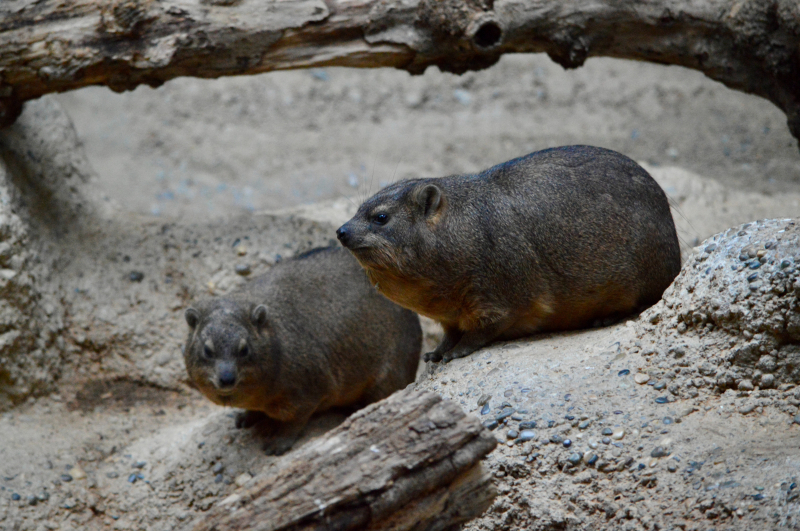
unsplash.com Video by Dave Mosher -
The Hoopoe (Upupa epops) is a distinctive and charismatic bird known for its unique appearance and unmistakable "oop-oop-oop" call. This avian species is widespread, inhabiting a broad range from Europe and Asia to Africa. The Hoopoe is a member of the Upupidae family, and its striking features and fascinating behaviors make it a noteworthy representative of the avian world.
One of the most distinctive features of the Hoopoe is its crest, a prominent crown of feathers on its head that can be raised or lowered. The crest is typically black with white stripes, and its ability to erect or flatten serves various functions. During courtship displays or when the bird is alarmed, the Hoopoe raises its crest, creating an impressive and conspicuous sight. The rest of its plumage is a combination of pinkish-brown on the body and black and white markings on the wings and tail, providing a beautiful and intricate pattern.
The Hoopoe is renowned for its specialized foraging technique. It uses its long, slender, and slightly down-curved bill to probe the ground for insects and larvae. Additionally, the Hoopoe's bill is adapted for extracting prey from crevices, and it can open its bill wide to capture larger insects. Its diet consists mainly of insects, particularly beetles, caterpillars, and ants, making it an essential contributor to pest control in its habitat.
During the breeding season, Hoopoes engage in elaborate courtship displays. The male performs aerial displays, showcasing its wings and calling to attract a mate. Once a pair is formed, the female selects a nesting site, often in tree hollows, walls, or termite mounds. The Hoopoe is known for its meticulous nesting habits, and the female lines the chosen cavity with grass, feathers, and other materials.
The Hoopoe's vocalizations are equally distinctive. Its call, often described as a soft "oop-oop-oop" or a trilling sound, is frequently heard in its habitat. These calls serve various purposes, including communication between mates, establishing territory, and alerting others to potential threats.
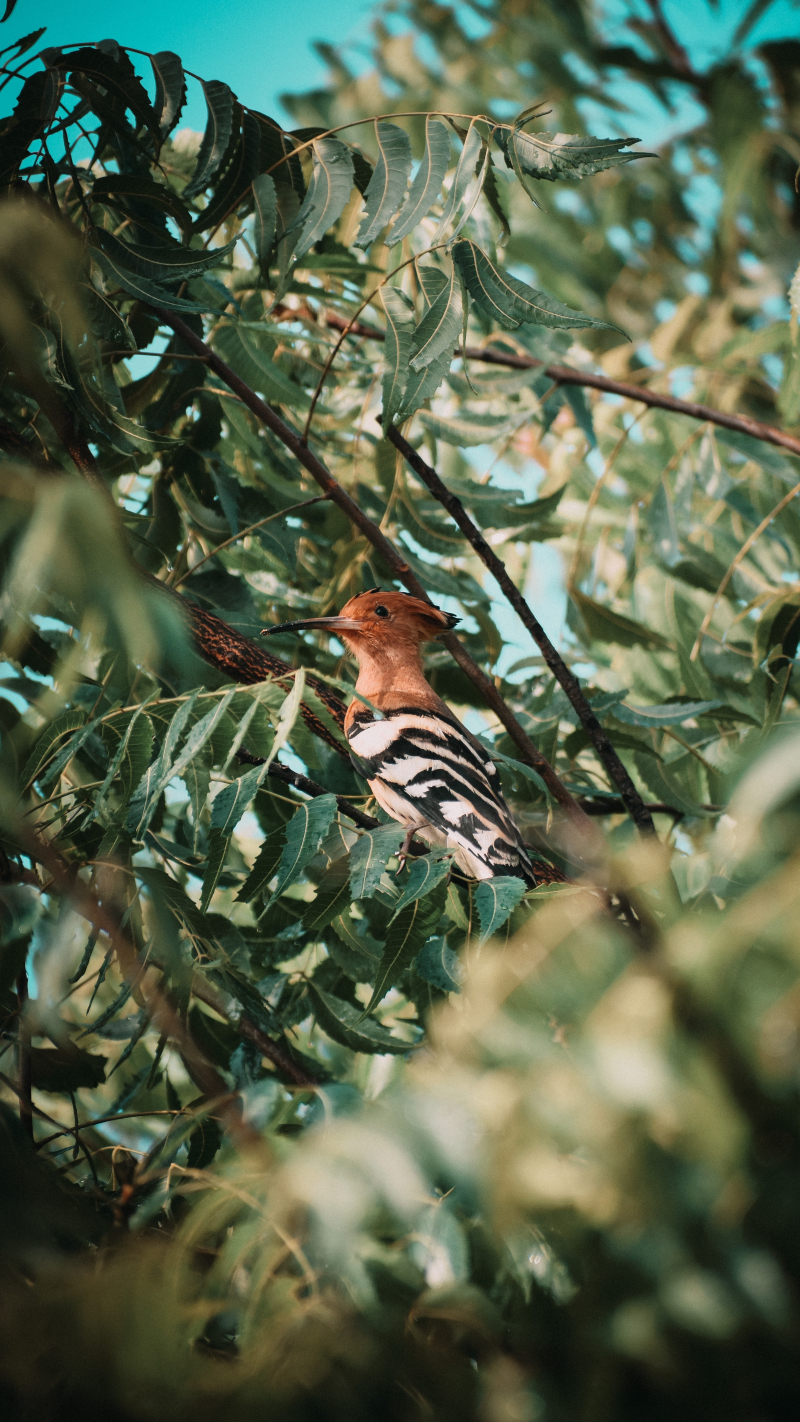
unsplash.com Video by Artur Homan -
The Habu Snake, scientifically known as Protobothrops flavoviridis, is a venomous pit viper species indigenous to East Asia, particularly found in Japan, Taiwan, and the Ryukyu Islands. Named after a Japanese word that refers to several pit vipers, the Habu holds cultural significance in the region and is both feared and respected for its potent venom and distinctive appearance.
Characterized by a stout body, a triangular-shaped head, and distinctive pit organs located between their nostrils and eyes, Habu Snakes are part of the subfamily Crotalinae, commonly known as pit vipers. These heat-sensitive pits help them detect the infrared radiation emitted by warm-blooded prey, facilitating precise strikes in low-light conditions. The Habu's coloration varies, often featuring shades of brown, green, or gray, providing effective camouflage in their natural habitats.
Habu Snakes inhabit a range of environments, from grasslands and forests to agricultural areas and human settlements. They are highly adaptable and can thrive in a variety of ecosystems, demonstrating a remarkable ability to coexist with humans. While they play a crucial role in controlling rodent populations, their presence near human settlements has led to human-snake conflicts, as they are often found in areas where people live and work.
One of the distinguishing features of the Habu Snake is its venom, which contains a potent cocktail of toxins designed to incapacitate prey. While the venom is primarily used for hunting, it can pose a threat to humans if bitten. Habu bites can lead to symptoms such as pain, swelling, and tissue necrosis, requiring prompt medical attention. In certain regions, antivenom is available to counteract the effects of the venom.
The Habu Snake has a significant place in the folklore and traditions of the Ryukyu Islands, particularly in Okinawa, Japan. Folktales and legends often depict the Habu as a symbol of strength, tenacity, and resilience. Traditional ceremonies and rituals associated with Habu worship reflect a deep cultural connection to this snake.
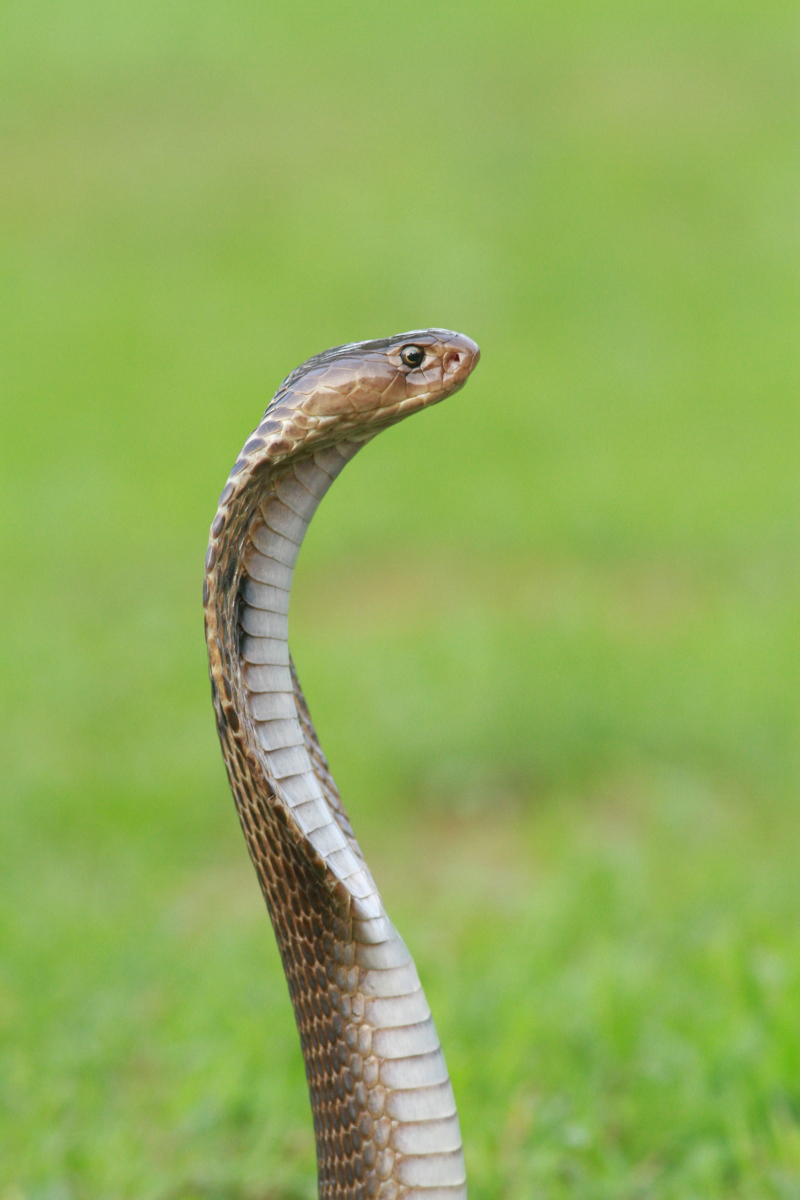
unsplash.com Video by viperkeeper -
Herons, graceful and elegant wading birds belonging to the Ardeidae family, are a diverse group found across the globe. These birds are known for their distinctive long legs, necks, and bills, making them well-adapted to their aquatic habitats. With a wide range of species, including egrets and bitterns, herons exhibit a fascinating array of behaviors and characteristics that have captured the attention of bird enthusiasts and nature lovers.
One of the defining features of herons is their long and slender legs, allowing them to wade effortlessly through shallow waters. Their elongated necks and bills are specialized for capturing prey, primarily fish, frogs, and other aquatic organisms. Herons are opportunistic feeders, employing various hunting techniques such as standing motionless, stalking slowly, or striking quickly with a lightning-fast jab of their bills.
The Great Blue Heron, one of the most iconic species, boasts a striking appearance with its blue-gray plumage, a long neck, and a dagger-like bill. Other species may exhibit different colors and markings, ranging from the pure white of the Great Egret to the distinctive black-crowned night heron with its stocky build and reddish eyes.
Herons are commonly found in wetlands, marshes, and along the shores of rivers, lakes, and coastal areas. Their habitats provide an abundant source of food and suitable nesting sites. Heronries, colonies where multiple heron pairs nest together, are a common sight in breeding season, typically situated in trees or reed beds.
During the breeding season, herons engage in elaborate courtship displays, involving aerial acrobatics, bill-clattering, and mutual preening. Once a pair has formed, they collaborate to build a nest, usually situated high in trees or on platforms in reed beds. The nests are often constructed with sticks and lined with softer materials.
Herons have played significant roles in mythology and symbolism in various cultures. In ancient Egypt, herons were associated with the sun god Ra, while in Native American folklore, herons symbolized wisdom and patience. Their stoic and focused demeanor during hunting, combined with their graceful flight, has led to them being admired and revered in many societies.
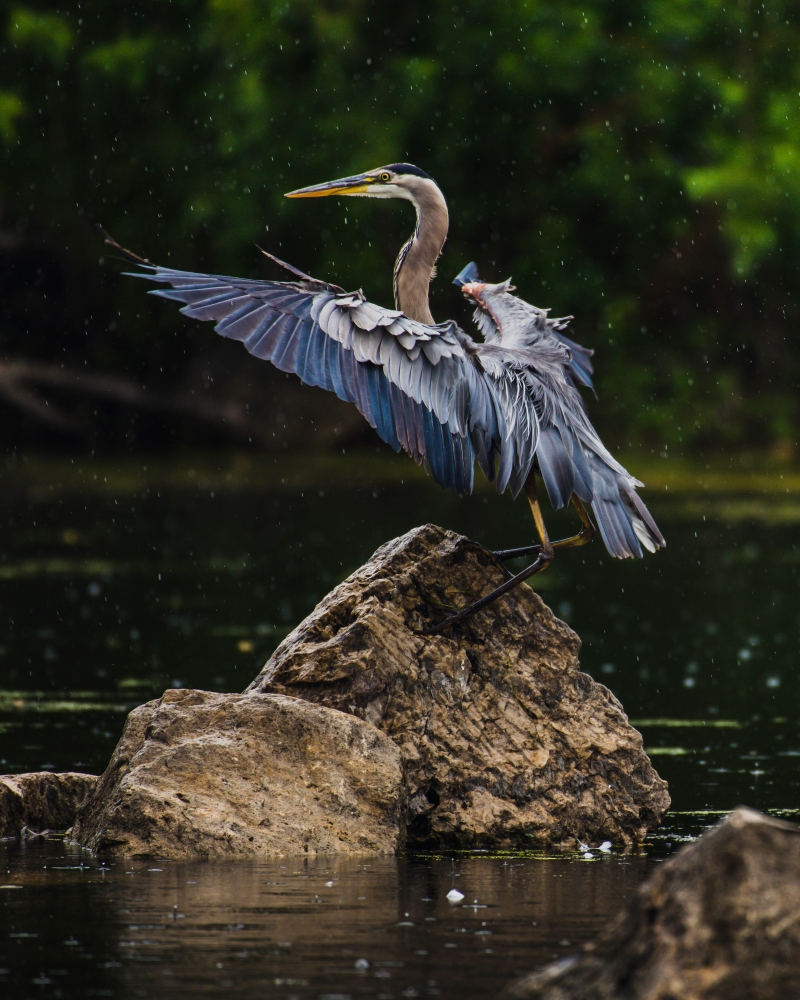
unsplash.com Video by National Geographic -
The Hamster, a small and endearing rodent, is a beloved household pet and a popular member of the animal kingdom. Recognized for its compact size, furry appearance, and distinctive cheek pouches, the Hamster is one of the common animals that start with the letter "H." These rodents belong to the subfamily Cricetinae and are native to various parts of Europe, Asia, and the Middle East.
One of the most distinctive features of hamsters is their cheek pouches, which are large, stretchable pouches located on both sides of their face. These pouches serve as a convenient storage space for food, allowing hamsters to gather and transport large quantities of seeds, grains, and other small items to their nests. This adaptation is particularly useful in the wild, where hamsters can efficiently collect food and store it for later consumption.
Hamsters are known for their nocturnal and crepuscular behavior, meaning they are most active during the night and dawn. This behavior aligns with their natural instincts as burrowing animals, seeking safety and avoiding predators by staying active during low-light conditions. In captivity, this can make hamsters ideal pets for individuals who are more active in the evenings.
These small rodents are prolific breeders, and in the wild, hamsters construct burrows for shelter and protection. In captivity, hamsters are often kept in cages with tunnels and hiding spots to mimic their natural habitat. They are generally solitary animals and can become territorial, so it is essential to provide enough space and appropriate enrichment for their well-being.
Hamsters come in various species and coat colors, including the popular Syrian hamster and the Dwarf hamster. Syrian hamsters are larger and usually have a solitary disposition, while Dwarf hamsters are smaller and can tolerate living in pairs or small groups under proper conditions. The diversity in color and size adds to the appeal of hamsters as pets.
As pets, hamsters are known for their gentle nature and relatively low maintenance. Providing them with a well-balanced diet, a clean and secure living environment, and opportunities for physical and mental stimulation contributes to their overall well-being. Additionally, hamsters enjoy activities like running on exercise wheels and gnawing on chew toys, which help keep their teeth healthy.
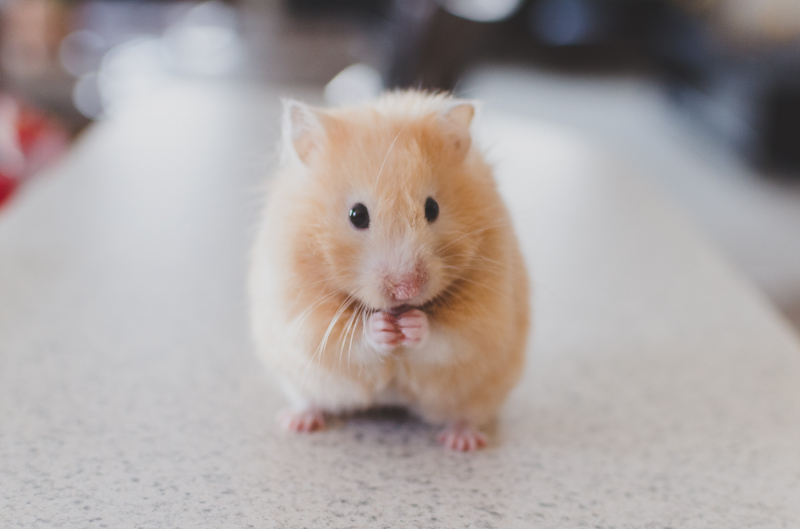
unsplash.com Video by KumaQQ

















